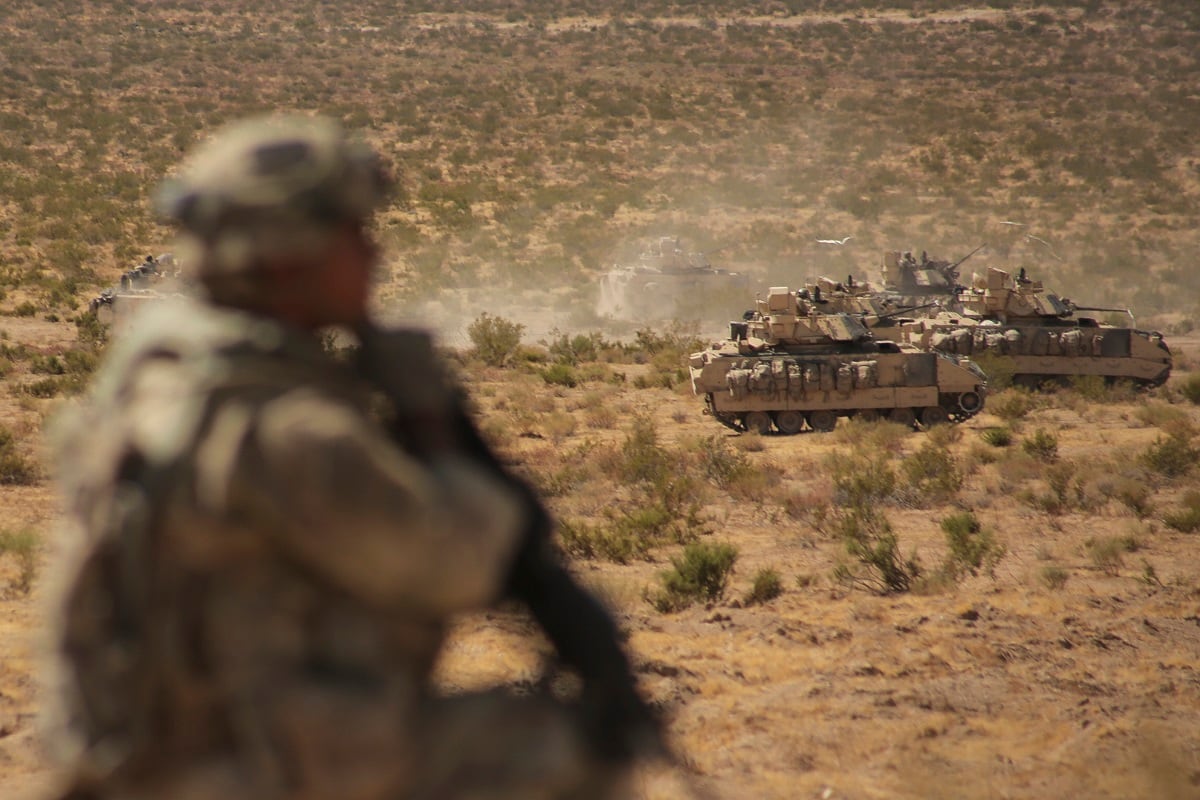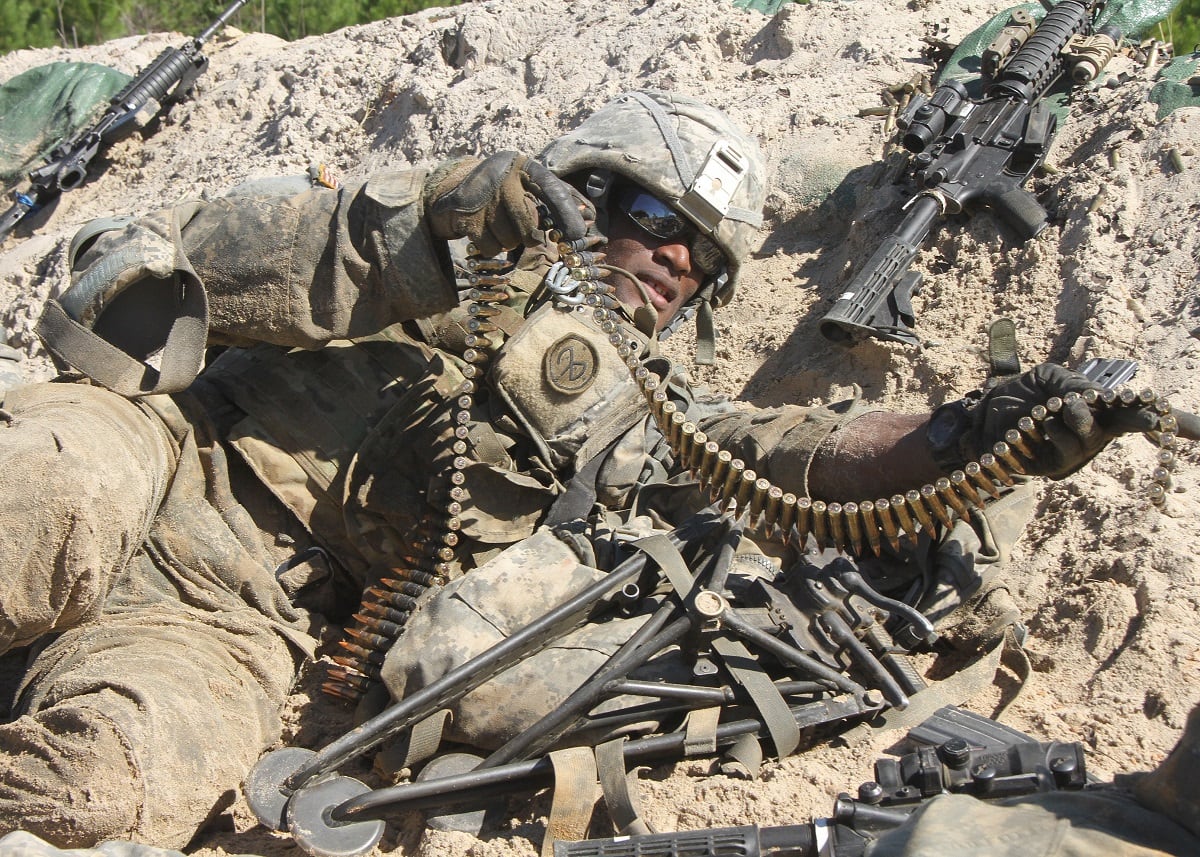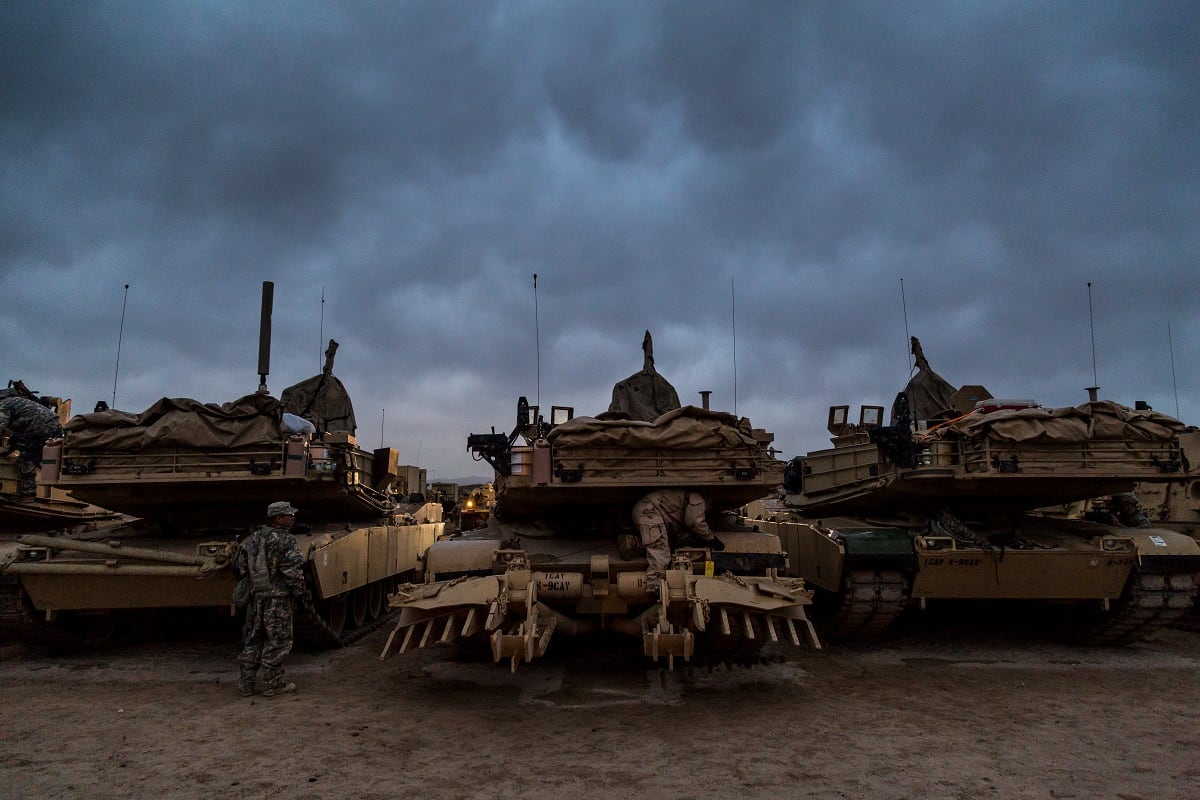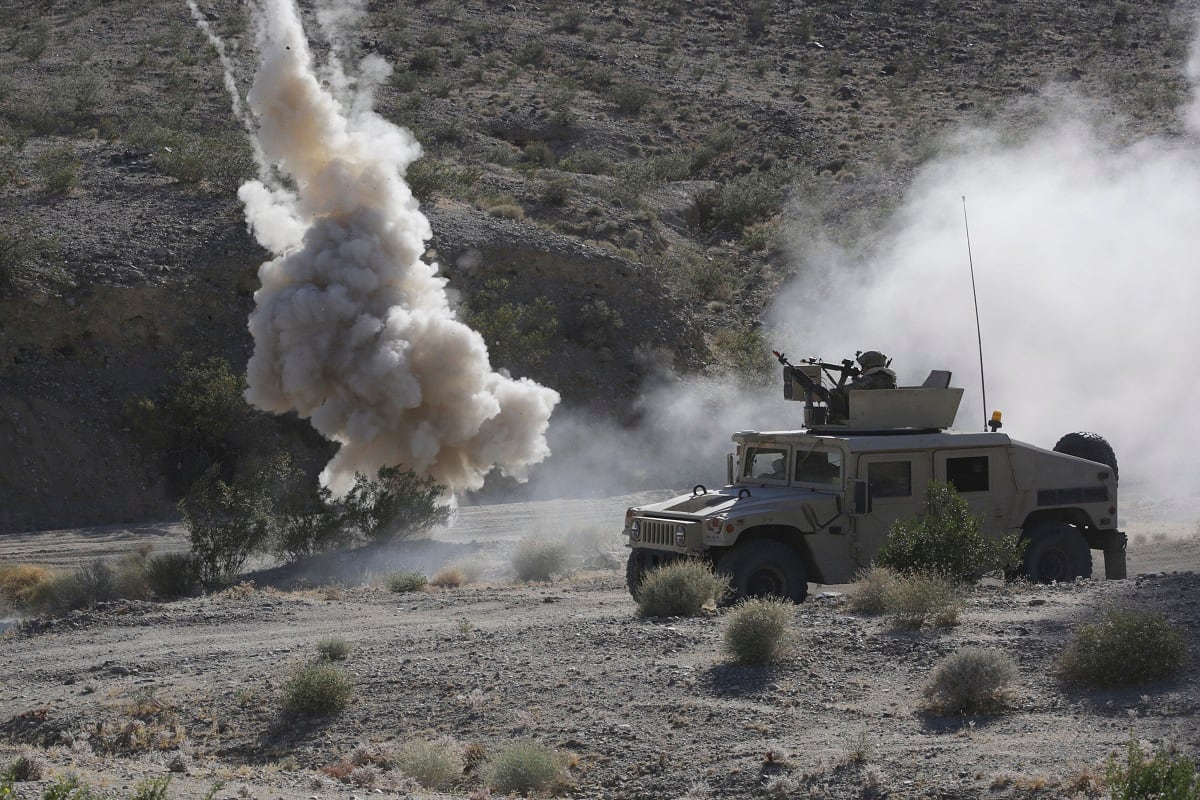On any given day, the Army is prepared to send roughly a third of its 58 total brigade combat teams to support overseas operations.
If that number sounds low to you, the service agrees, and senior Army leaders have set a goal to double that figure by 2022.
To do that, training will ramp up to shorten the gaps between the brigades at the peak and valley of the readiness cycle, so soldiers can expect to see not only more combat training center rotations, but more time spent in the field at home station.
“Units aren’t built just overnight, and their readiness isn’t built overnight, as you know,” Army Chief of Staff Gen. Mark Milley told the House Appropriations Committee back in March.
The service has been able to pull itself up from a funding drop in 2014, leaders say.
“A year ago right now we had two brigades fully ready — well, it’s four times that much this year,” Lt. Gen. Joseph Anderson, the Army G-3/5/7, told the House Armed Services Committee in April.
Still, officials say, it may not be enough to meet the security force assistance mission the Army is doing on multiple continents, while keeping an eye on potential conflicts with China, Russia or North Korea in the future.
The goal, Milley has said, is 66 percent readiness for active BCTs and 33 percent in the Army National Guard.
But exactly how many ready BCTs does the Army need, and how do the numbers today compare to the height of the War on Terror?
“You have to first get after the ‘ready for what?’“ Col. John O’Grady, chief of collective training for the Army G-3/5/7 told Army Times on May 8. “And then you can go ahead and answer that question in a better way.”
To reach its goal, officials say, the Army will need both predictable funding and an operational environment to match ― that is to say, no sudden ground wars.
Defining readiness
One-third is a low number, statistically, though Army leaders would argue that globally, BCTs are more ready now than they have been in decades.
Despite the figures, individual brigades are prepared to do more types of missions now than they were perhaps 10 or 15 years ago, when there were fewer gaps in the readiness cycle but also a much narrower mission.
“When we talk about 10 years ago, we’re in the middle of the surge [in Iraq], very focused on the Middle East,” said Col. Matt Neumeyer, the G-3/5/7’s chief of readiness. “So the forces we sent were very ready for the mission we gave them. However, it’s not what our strategy is calling for now, right?”

Today, the Army emphasizes security force assistance along with that counterinsurgency focus, and, in the past few years, a new focus on training to prepare for near-peer competitors, adversaries with comparable organizations and technology.
“We’re probably two or three times more ready in that regard,” Neumeyer said. “We have units that are focused on that.”
It wasn’t that way a decade ago.
“As a field artillery battalion commander, I deployed as an infantry battalion. That was the mission I was given. And we were ready for that mission,” O’Grady said of a past GWOT deployment. “We were not at all ready to go ahead and do what the Army organizes, equips and mans an artillery battalion to actually do in the event of a near-peer competitor fight.”
So, though there were multiple brigades on the ground at a time in places like Iraq and Afghanistan ― and more at home ready to replace them ― experts say you can’t compare that level of overall readiness to what the Army practices today.
“Those brigades weren’t necessarily organized to fight something in Europe or something in Asia, against what you would call a traditional conflict,” Neumeyer said.
Today, they need to be.
“If we need 10 of a particular type of unit to be ready for the Pacific, for Europe, for CENTCOM, and you only have eight ready, you’re going to assume some risk by sending two not optimally ready,” said Col. Dave Hudak, the G-3/5/7’s chief of training analysis.
Train harder, train longer
With lower demand and funding, the Army in recent years slashed its training budget, to include combat training centers where brigades spend weeks simulating a deployment after a year of preparation.
In a high op tempo environment, they would then go downrange. When demand is lower, they head back to home station, where they might participate in an exercise to test their readiness, or start the cycle over again.
“You would almost hit a little bit of a cliff after that, because we didn’t have anything programmed for that second year,” Hudak said.
But with a budget infusion over the past couple of years, the service has been able to get its Joint Readiness Training Center and National Training Center rotations up to 19 a year, Anderson said, and up to 20 next year.
“These become full-spectrum rotations,” he added, with a priority on cyber and electronic warfare.
“And we’re trying to get repetitive to get brigades through there more than once a year,” he said.

For now, Neumeyer said, the goal is a little more conservative, to cut down on the churn of preparing for a training center twice in one year.
“What we’re working for would have something like a year, two years between for every brigade,” he said.
That timeline contracts from five years to four years in the reserve component, Army Forces Command’s director of training told Army Times on May 14.
“We made a decision that started in fiscal year ‘18, the Army was going to fund and train four National Guard brigades at CTCs each year,” said Col. Gregory Sierra, doubling the previous number of rotations.
In May, for the first time ever, the Army sent a Guard brigade to each of its two training centers, with Georgia’s 48th Infantry Brigade Combat Team at JRTC in Louisiana and Tennessee’s 278th Armored Brigade Combat Team at NTC in California.
Neither had been through the centers in years ― since 2009 for the 48th and 2004 for the 278th.
“There are future missions that we anticipate where we would employ the National Guard brigades, whether it goes to CENTCOM or other areas of responsibility,” Sierra said.
And now, following a training center rotation, units who are not deploying will still get to flex what they’ve learned.
“You won’t necessarily get a CTC event, but we will fund a brigade-size event where you can get all of your units out there and do a force-on-force exercise,” Hudak said.
An example, he added, would be a division exercise scheduled for 2020 in Europe.
The funding bump would also translate to more training at home.
“A 20 percent increase in funding is a big deal,” Hudak said. “That means you can do those multi-day, week, two-week training events, where you get the force-on-force and really hone your craft.”

For soldiers, the ramp up in training should be predictable, despite the increased intensity.
“These larger scale things are not things that you can just plop down and say, ‘Guess what? Tomorrow we’re going to the field for four weeks,’“ O’Grady said.
Generally, commanders should be able to tell their soldiers a year out where they can expect to be going, Hudak added.
On the other hand, if a BCT is ready enough to move itself to the top of the list, there is always the uncertainty of whether it will actually be called on for an unplanned deployment, responding to an emergent threat.
“But at the human level, that feels exceedingly unpredictable,” O’Grady said.
What could go wrong?
Increased funding has been the biggest boon to the Army’s plan to overhaul BCT readiness, and it could just as quickly hamper any progress.
“What would be ideal is a budget every year,” Neumeyer said, likening the process to a home construction project, where you can’t plan to add on the following year if you’re not sure you’ll have the money for it.
The less controllable variable is demand, particularly in the form of a new deployment of combat troops.
“From a readiness point, when we talk about demand, the reason why is if it increases, it’s reducing supply,” Neumeyer said.
But on the other hand, with the plan as it is now, the Army will be better able to train up the next brigades in line more quickly.
“Those guys who are in line, they’re better trained than they were three years ago for contingency,” Neumeyer said. “Our ability, when they become priority, to get them trained and keep them at a higher level of training is getting better.”
For now, the Army is safely closing its readiness gaps, officials say.
“If you have eight [BCTs] that are ready to fight tonight — that actually might be enough, quite frankly,” O’Grady said. “And there’s nothing that suggests, with all of the information that we have, that they will not be at the readiness required at the time we need them.”
Meghann Myers is the Pentagon bureau chief at Military Times. She covers operations, policy, personnel, leadership and other issues affecting service members.





